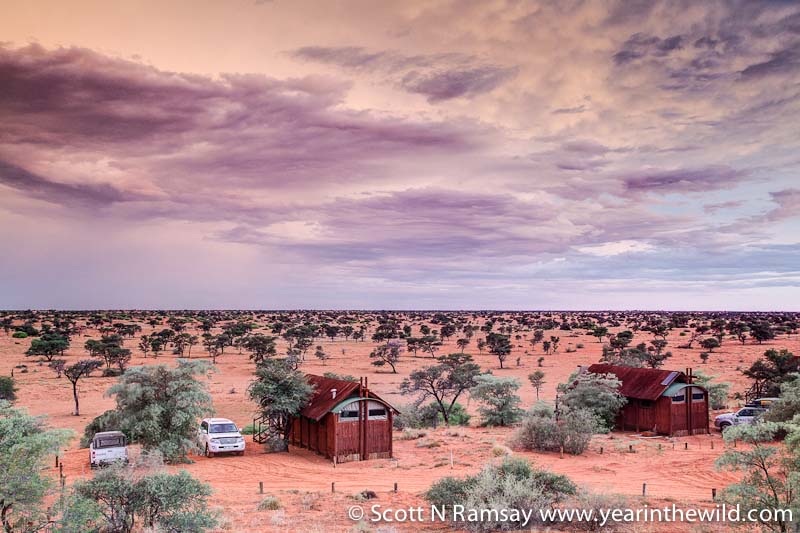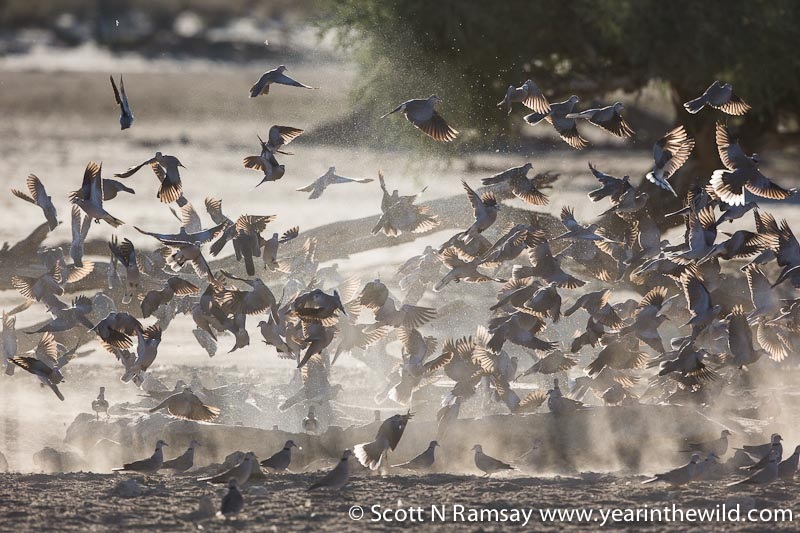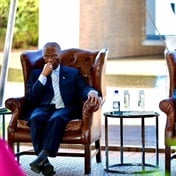And while many felt his speech had very little vision for the future - it was in the context of tourism and the environment where Zuma elaborated on how the state plans to "grow the industry, given its potential for job creation".
Zuma not only confirmed the state's plan to explore other sources of energy, in line with the Integrated Resource Plan for Energy, he also called fracking a game changer for the Karoo region and the South African economy.
"Having evaluated the risks and opportunities, the final regulations will be released soon and will be followed by the processing and granting of licenses," Zuma said.
Anybody who has been following the issue in the Karoo or has watched Gas Land knows what an alarming step this is.
A Year in the Wild photo-journalist Scott Ramsay recently visited the Kgalagadi Transfrontier Park only to discover that fracking prospecting licenses have already been approved on the Botswana side of the park.
Read about his experience and then email us your thoughts on the matter to info@news24travel.com.
"My remote camp in the middle of the huge Kgalagadi Transfrontier Park was perfect. A camel thorn tree provided shade, and I was the only person for fifty kilometres in either direction.
Earlier I had driven my 4x4 for three hours along an empty jeep track connecting the South African side with Botswana’s Mabuasehube Game Reserve in the east.
Once I’d found a site, I pitched my roof-top tent, lit the wood fire and cracked a cold beer, then listened to the symphony of the desert dusk. Lions roared in the distance and barking gekkos chirped all around me. Stars streaked across the black sky. Out here, there are no roads, no electricity, no cell phone reception, no Facebook and no people.
The immense 3,8 million hectares protected area is an antidote to the claustrophobia and stress of the modern world. Bigger than Belgium, and fifty percent bigger than Kruger National Park, this cross-border park of grassy dunes and endless horizons is one of the few truly wild places remaining on the continent.

Take a two-minute escape with these 10 striking pics of the Kgalagadi
Most of Africa has been transformed by agriculture, mining and urban sprawl. A place like the Kgalagadi is a potent reminder of how much of the continent modern humans have already destroyed, a place that remains an authentic home for iconic creatures like lions, leopards and cheetahs.
But even the Kgalagadi – seemingly immune to the modern world – is now in danger of losing its natural lustre and wilderness atmosphere. The Botswana government has issued prospecting licences to energy companies who wish to use hydraulic fracturing to tap coal bed methane gas.
Along with the Botswana side of Kgalagadi Transfrontier Park, prospecting licences have also been issued for Chobe National Park and Central Kalahari Game Reserve. TV program Carte Blanche last year confirmed that some fracking has already begun in Central Kalahari Game Reserve.
Although no extraction licences have been issued yet for the Kgalagadi area, prospecting rights have been granted, and there’s a possibility of fracking operations beginning on the Botswana side of the park.

South African National Parks Manager for Kgalagadi Steven Smith explained that potentially the whole of the Botswana side of the park is open to fracking operations. “We had no idea that the Botswana government was planning to do this. They should have consulted us first, because this is a transfrontier park.”
Currently, the matter has been transferred to South Africa’s Department of Environmental Affairs, and is waiting for their attention.
A recently released documentary entitled The High Cost of Cheap Gas reveals that Botswana’s government issued the licences without consulting stakeholders like the parks authorities, communities or farmers. Energy company SASOL have been linked to one of the prospecting licences.
The process of hydraulic fracturing is not only unsightly, with pipelines, drill towers and access roads scarring the land, it can also pollute ground water sources. In a place like the semi-arid Kgalagadi, where the average 150mm annual rainfall is highly variable and droughts are common, it could prove destructive to the natural environment.
There are no natural permanent sources of surface water in the park, and all the water for animals is supplied by numerous boreholes. The two rivers – the Auob and Nossob – flow briefly only every few decades after very heavy rain.
Here, water is everything. Indeed, the word “Kgalagadi” means “always dry” in Setswana. During my trip to Kgalagadi, several thunderstorms unleashed sporadic rain showers. The drenching water sometimes formed pools in the dry river beds and pans.
But within a day, the water had disappeared into the immense sandy area, soaking down into the ground water far below. The blazing sun soon turned the desert into an oven again, temperatures soaring to above 40 degrees Celsius.
According to Dr Gus Mills, who spent 40 years in the Kgalagadi studying carnivores, the animals are highly dependent on water and grazing for their survival, and need to move vast distances to follow the rains. Camel thorn trees have tap roots 70 metres deep that plunge down to the aquifers below.

“The Kgalagadi is a remnant of an even bigger natural system that once occurred in the southern parts of Africa,” explained Dr. Mills. “The area is big, but it’s not completely uninfluenced by people. It’s arid, it’s fragile and is sensitive to disturbance.”
There are worrying signs that the natural processes are being choked by development in surrounding areas. Springbok numbers have crashed, and are battling to recover. The trans-Kalahari highway and cattle fences could have stopped their migrations. Lions sometimes roam into surrounding areas, preying on cattle, only to be shot by farmers.
Now, with the prospect of fracking within Kgalagadi, the very sanctum of wilderness is under attack by man. Surely the question must be asked: why, when most of Southern Africa is already developed and exploited, are governments intent on destroying the last of the wilderness areas?
For accommodation and campsites, contact www.sanparks.org or www.tashebube.com.bw.





 Publications
Publications
 Partners
Partners





















